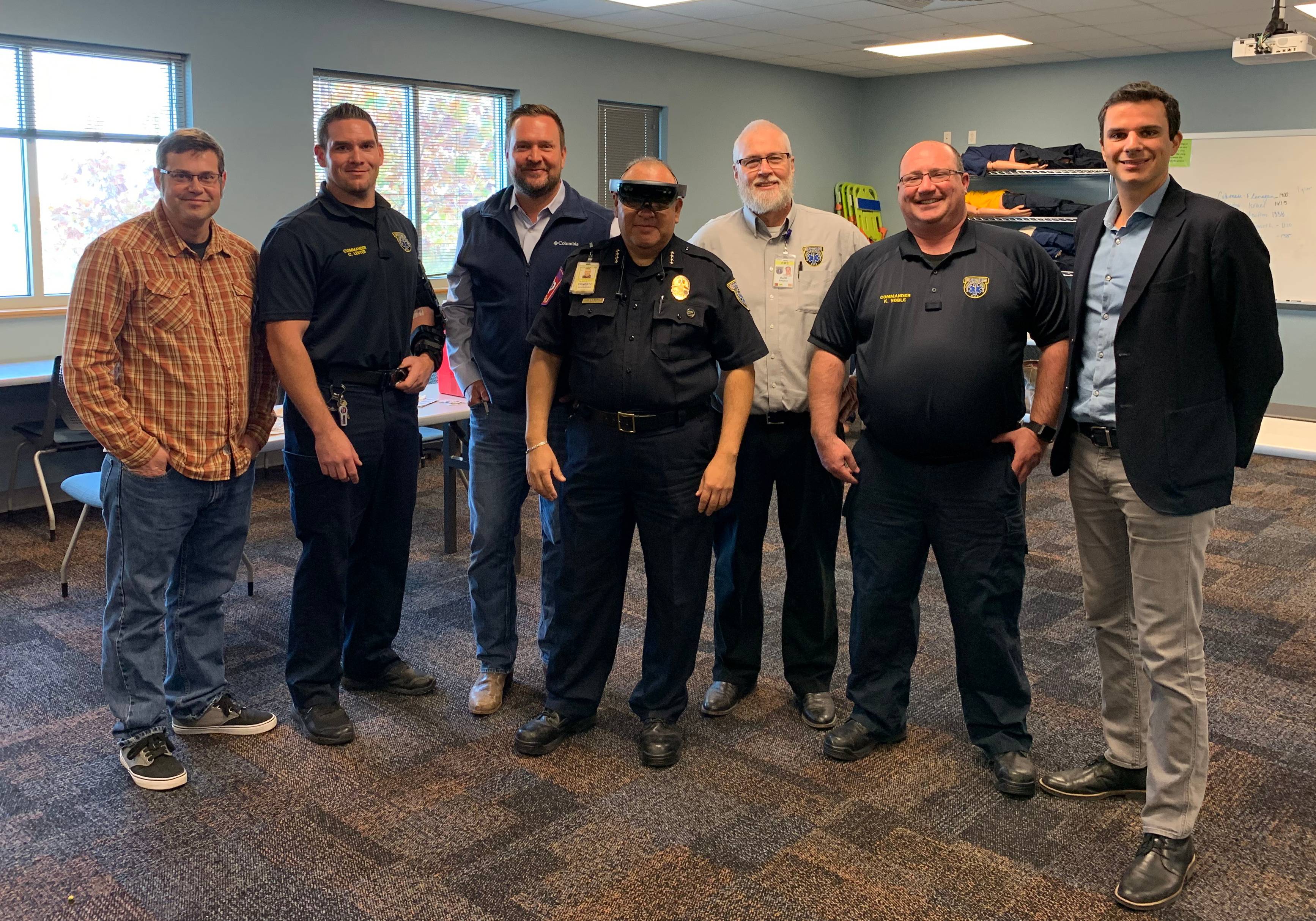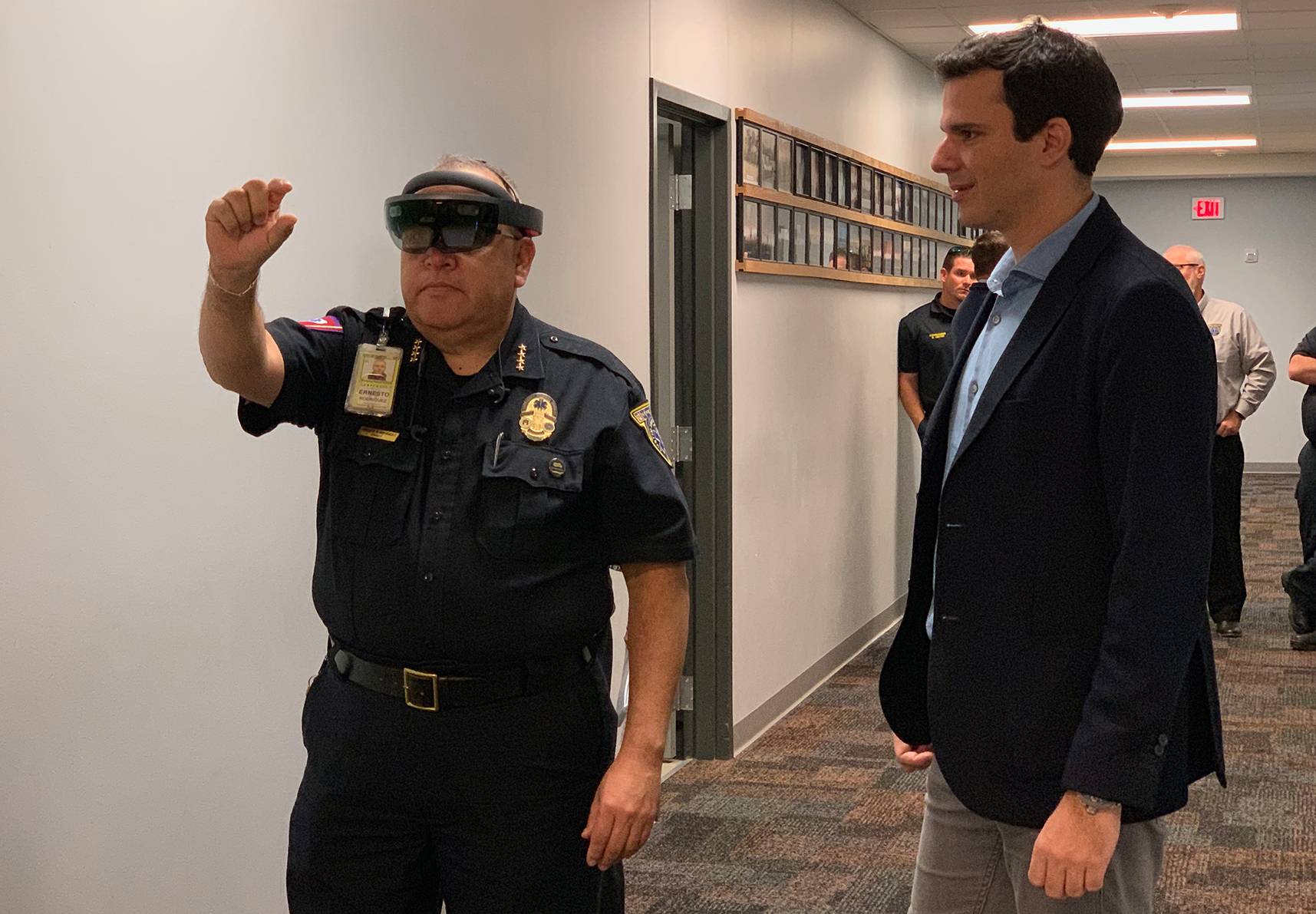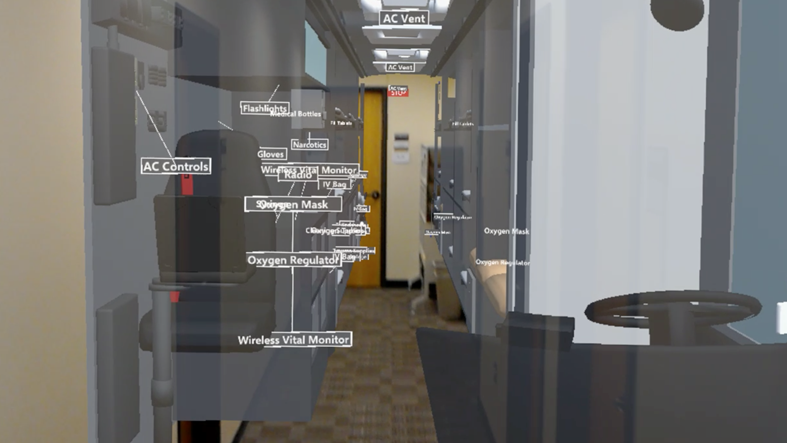Virtual reality training helps first responders
Julie Cooper | April 16, 2019


An interdisciplinary team of Texas State University faculty and students is helping to train first responders using augmented reality (AR) and virtual reality (VR) through Just-in-Time VR Training.
Working with the Austin-Travis County EMS (ATCEMS), the Texas State group developed a VR training system that helps medics learn about the AmBus, a 20-bed ambulance. The system allows EMTs to train any time in their station house.
The Austin AmBus is currently one of 13 in Texas with more expected to be added in 2019, according to ATCEMS Commander Keith Noble. The AmBus has been used for recent mass casualty or large-scale disaster evacuations including Hurricane Harvey, and flooding that impacted a Buda nursing home.
It all began three years ago when Travis County started looking for ways to improve training for EMS cadets. At the same time, they wanted to control costs. They held an internal competition with a $5,000 grant for the winning suggestion. Noble worked with one IT team from the city of Austin to use 360-degree cameras in the training process. EMS Chief Ernesto Rodriguez was part of a team looking at VR. “The idea was, what can we learn from VR training with AmBus? We don’t get to use it often and there is a lot of equipment on it,” Noble says.
Next, a Texas State team led by Dr. Scott Smith, associate professor in the School of Social Work and director of the Virtual Reality and Technology Lab, joined the project. The university team also includes Dr. George Koutitas, Ingram School of Engineering and director of the XReality Research Lab; Grayson Lawrence, School of Art and Design; Dr. Vangelis Metsis, Department of Computer Science; and Dr. Mark Trahan, School of Social Work. City of Austin team members includes Ted Lehr, IT data architect; Marbenn Cayetano, IT business systems senior analyst; and Charles Purma, IT project manager.
The people behind the Just-in-Time Reality Training are taking their project on the road. One of their stops was the Texas Emergency Management Conference, April 15 to 18 in San Antonio. In June, Koutitas will be attending an engineering technology conference in Rhodes, Greece.
Explaining how VR and AR differ, Koutitas says, “In AR you see a virtual environment that is overlaid in the form of a hologram on the physical environment or space. This provides the advantage of improving the physical memory during the training.”
While in-person training can take weeks, AR training can be completed in a few days. The cost of in-person training for one class of 80 cadets on the AmBus is more than $50,000. It is also possible this kind of VR and AR training can be used with other things such as hazardous materials, hospital emergency rooms and fire rescues. The plummeting cost of the VR equipment has also aided the success. Smith points out that a few years ago, a headset could cost $30,000. Today, an improved model sells for less than $700. He estimates that in a few years such a headset could be the size of a pair of glasses.

Texas State students were also part of the project. “They did everything,” he says. “Design, develop, collaborate. It was really cool to watch them. They got the most hands-on experience they’ve ever had developing a project.”
With AR, the designers have recreated the interior of the AmBus, down to the exact number of steps an EMT would take to find supplies within the bus. VR students included lead developer and lab coordinator Clayton Stamper, James Bellian, Dante Cash and Elijah Gaytan. The AR students include Shivesh Jadon, Chaitanya Vyas and Shashwat Vyas.
Communication design students include Jose M. Banuelos and Kayla Roebuck, who taught themselves 3D modeling over one summer; sophomore Chloe Kjosa, who joined their team because of a love of drawing and video games; and Lorena Martinez (BFA ’18), who helped recruit students to work on the AmBus project, gathered data and worked on the first prototype.
“We are proof that this kind of interdisciplinary collaboration works — electrical and computer engineering, social work, and design,” Koutitas says. “We collaborate on the research and the product that has an impact on people’s lives.”
ON THE WEB: Augmentedtrainingsystems.com
Share this article
For more information, contact University Communications:Jayme Blaschke, 512-245-2555 Sandy Pantlik, 512-245-2922 |